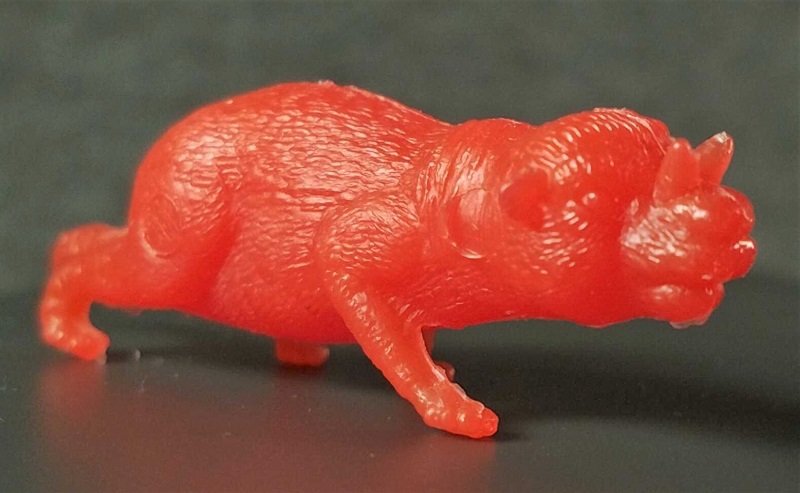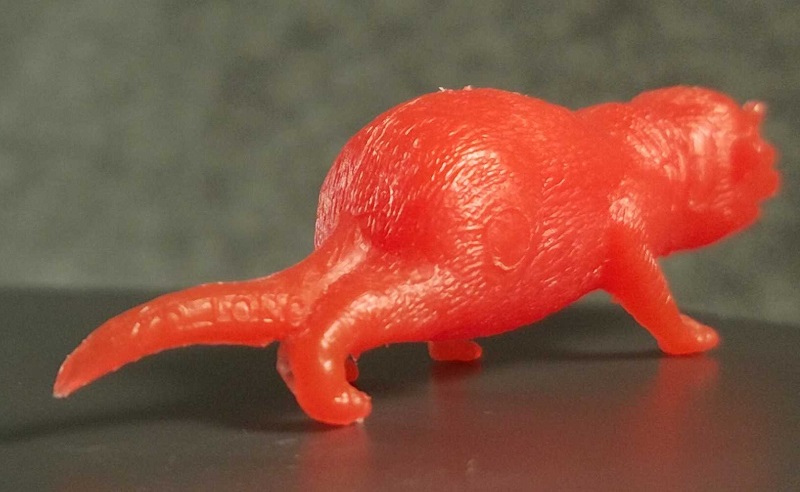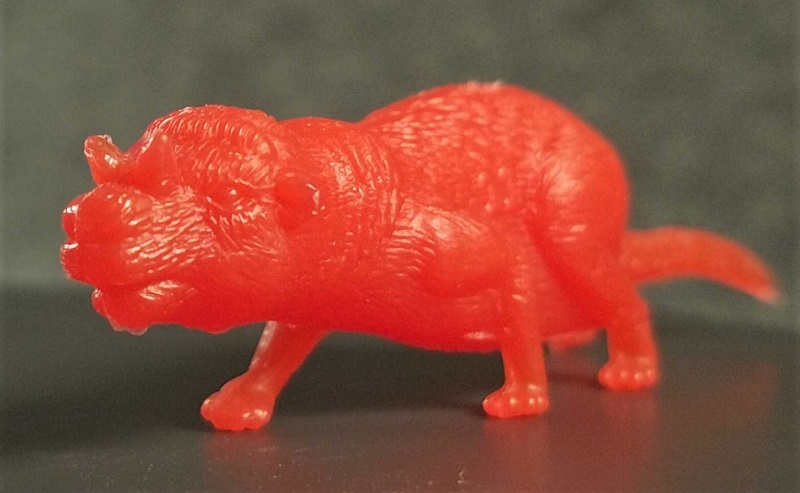A truly rare genus in the hobby to this day, MPC’s vintage figurine marks a bold move from a company most famous for its imitations – although the toy is perhaps showing its age with some design choices.
MPC (Multiple Products Corporation) is a well-known brand among experienced dinosaur collectors; their prehistoric line from 1961 and 1962 was widely sold through stores and catalogs for decades. While most of MPC’s figurines were based off of earlier products by the even-more famous company Marx, during their 1962 releases MPC produced 5 brand-new figures across three sets, representing brand new genera which Marx never touched. Probably the most remarkable of these new toys was Ceratogaulus, a species of rodent which is obscure even today in paleo-media.

First described in the early 1900s and just under a foot in length, there are currently six recognized species under the Ceratogaulus genus, which lived during the Late Miocene to Early Pliocene in North America; the type species, C. hatcheri, is likely the one represented by MPC. These “horned gophers” were distant relatives of modern beavers, and would have resembled a Marmot in life save for the two conical horns sticking straight upwards from between the eyes. Despite their curious, even stereotypically prehistoric appearance (it’s like a modern creature, but with horns and spikes! Huzzah!!), no toy company since MPC has ever bothered to recreate this genus, making the MPC endeavor all the more noteworthy in retrospect.

The MPC Ceratogaulus measures exactly 5 cm (2 in) long, tying with Cynognathus as the smallest prehistoric toy in MPC’s lineup. MPC primarily produced this figurine, and others from the 4th mold group (note: the numbering is arbitrary), in red or green plastics; the few I’ve encountered have all been bright red. The animal’s name and real-life size are engraved in tiny print on opposite sides of the tail. A numeral “11” is also printed on the left side of the body, but I am unsure of the significance. MPC sold this figurine in a variety of bagged, boxed, or blistered sets through the 1960s and 1970s, although it might not have been popular of a choice as the bigger, more impressive mammals and dinosaurs.


MPC fit a notable amount of detail into their tiny sculpt; however, being a toy-making company rather than a scientific organization, not everything about the model appears accurate. Fine details include furry texture all over the body, five individual toes on each foot, a lumpy pelt on the neck, and a full set of facial features culminating with the rodent’s distinguishing horns. These horns, however, are a bit on the small side, even for this figure; fossil specimens display horns nearly as tall as the skull was deep. The body, although round and plump, appears elongated; the neck region especially has been expanded upon, as the real-life animal had an extremely short neck as is seen in many other rodents today. The tail has also been enlarged, giving an almost rat-like appearance. Ironically, the limbs – particularly the front legs – are drastically undersized. Ceratogaulus had robust limbs with large paws for digging and burrowing; MPC’s sculptor, evidently, was not aware of this or decided the toy looked better without those big paws. The resulting model gives little indication of the animal’s underground lifestyle.

There are countless remarkable animals known from the fossil record that don’t get much representation in media. MPC made what seems now like a bold move to choose Ceratogaulus for their prehistoric line, but if anything I think it goes to show how many more options are out there for toy companies exploring the fossil record for new options. The MPC model is a neat little novelty of vintage toys, but it also displays some flaws that would make a new attempt from a modern company not only ideal, but long overdue. In the meantime, if you’d like to acquire a vintage horned varmint for yourself, keep your eyes peeled on marketplaces like eBay and Etsy. Ceratogaulus is one of the rarer MPC models, but still pops up somewhat often in single or lot listings.

Disclaimer: links to Ebay and Amazon on the DinoToyBlog are affiliate links, so we make a small commission if you use them. Thanks for supporting us!




Awwww, finally this interesting little model got a review! I’m I very fond of this model despite its age and is one of my favorite vintage figure.
Perhaps one day someone will make an updated figure.
I’ve been waiting for you to cover this one. It’s also one of the few MPC figures I hope to track down one day.
I’m glad you enjoyed it! This finishes up the “group 4” unique molds, so I have just a couple more from the next groups I plan to cover. I do admit, I was probably lucky to have obtained more than one of these in practically a single go.
Good on MPC for including this little weirdo among their offerings. If I’m not mistaken, Ceratogaulus is the only prehistoric rodent that has ever been made into a toy. Interestingly, sometime in the last couple of years, a Japanese company made another Ceratogaulus toy hidden in the center of a bath bomb.
Leave it to a Japanese company to provide an obscure item for an obscure genus!
Come to think of it, my knowledge of prehistoric rodents is very poor in general, and I don’t imagine there’s much popular coverage of the group in the media.
I would consider hunting this down if it wasn’t monochromatic.